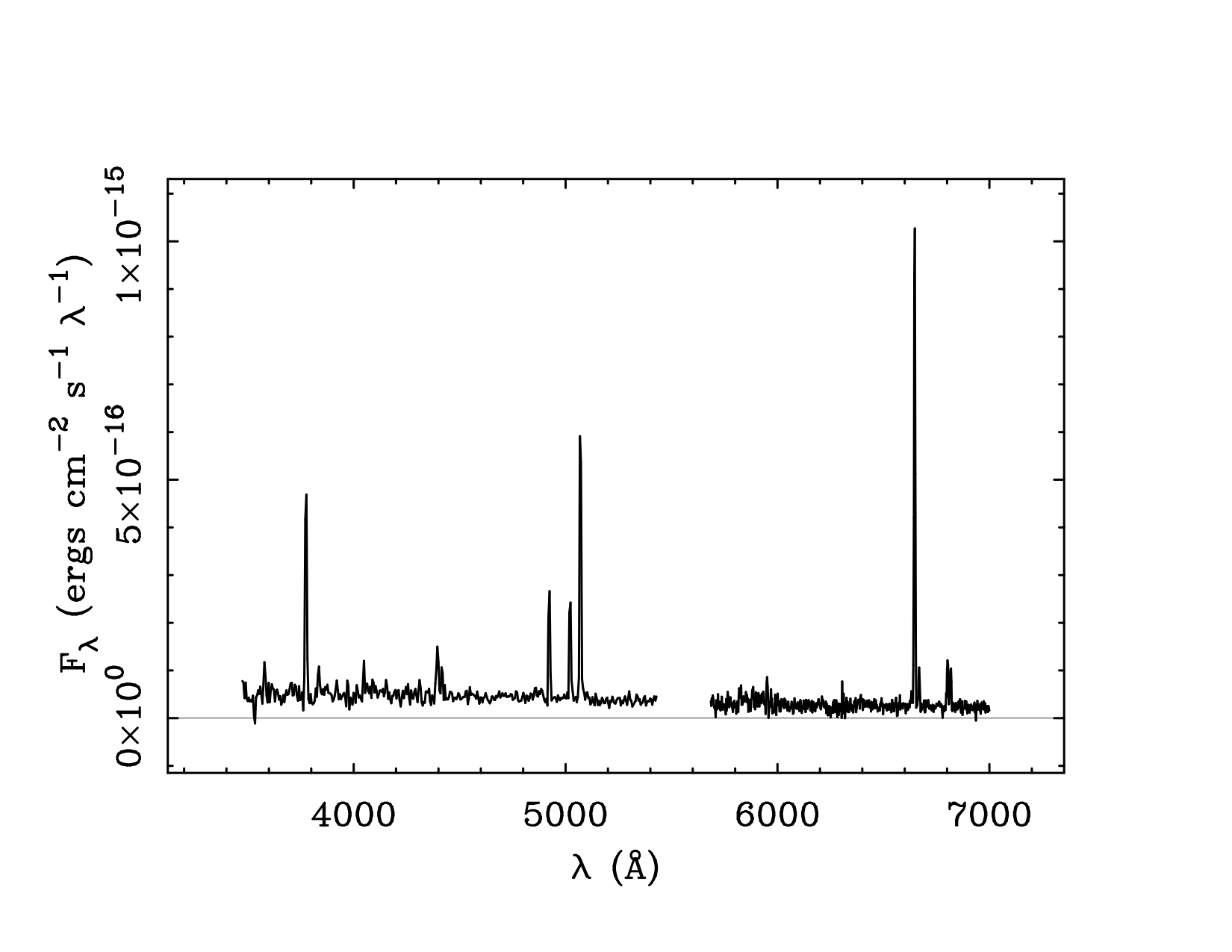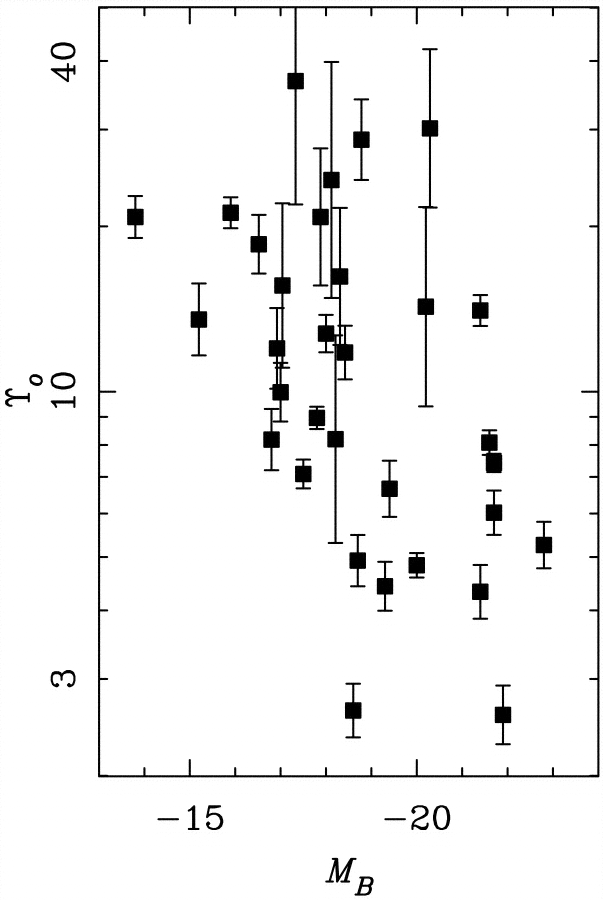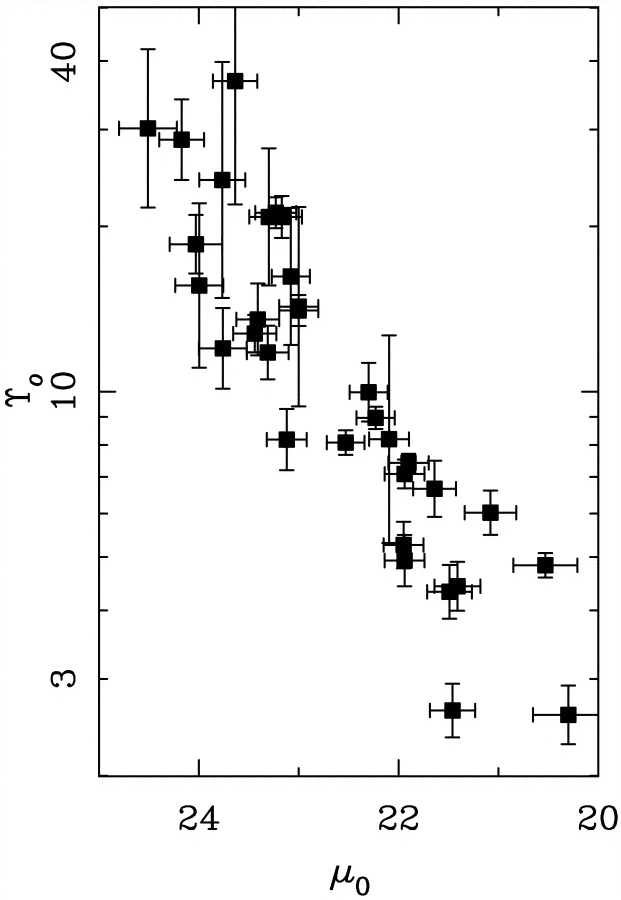
The size and surface brightness of disk galaxies as quantified by exponential
disk fits, showing the central surface brightness in the B-band against the
disk scale length. The data show the progression towards discovery of lower
surface brightness galaxies as surveys press deeper. Solid lines show the
theoretical limits of a hypothetical very deep survey. The diagonal
dotted lines shows the luminosity of an L* galaxy whicle the horizontal dotted
line shows the apparent threshold for disk stability.
|
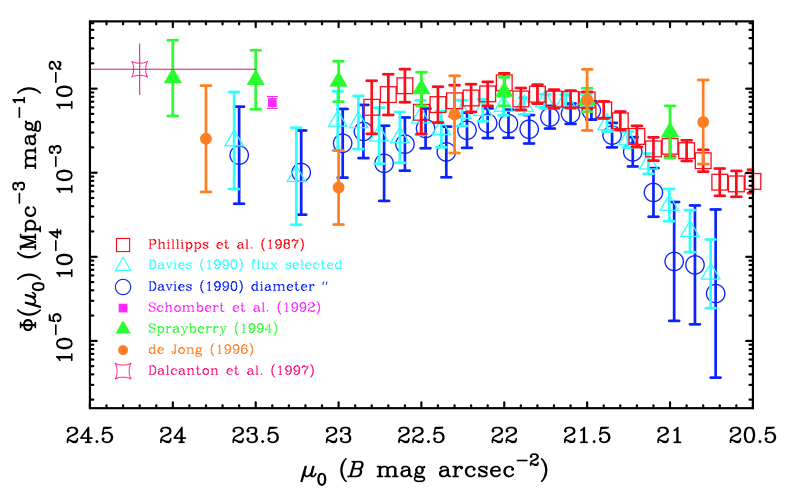
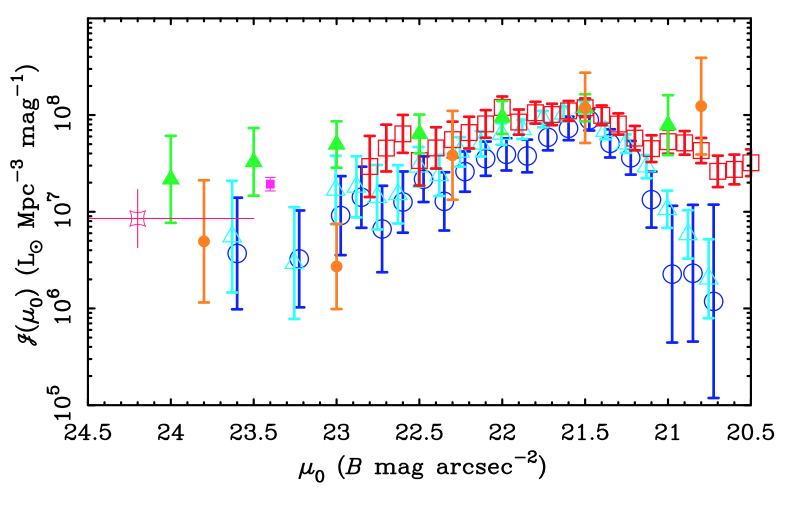
The number density (top) and luminosity density (bottom) of disk galaxies
as a function of central surface brightness. The disk stability line at left
corresponds approximately to the classic "Freeman Law." Rather than all disks
sharing this surface brightness, Freeman's limit is an upper limit to disk
surface brightness above which the numbers of galaxies declines rapidly.
Below the Freeman limit, there are approximately constant numbers of galaxies
at each surface brightness (top). These are, on average, less luminous than higher
surface brightness galaxies, so their contribution to the luminosity density
declines steadily (bottom).
|




